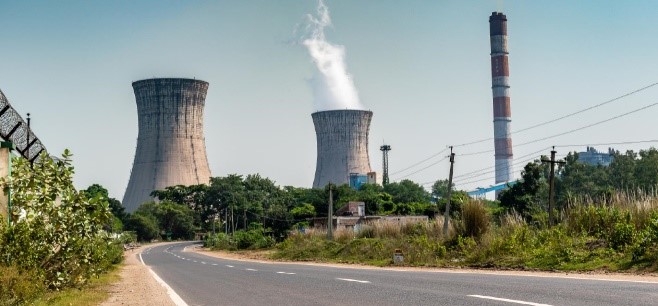Free Courses Sale ends Soon, Get It Now


Free Courses Sale ends Soon, Get It Now



Disclaimer: Copyright infringement not intended.
Context
Pledge
India's response to the pledge
India's stance and reasons cited
Economic and Developmental needs
Sectoral Approaches
Pledge not part of COP Discussions
No legal sanctity
Not Negotiated Official Documents
Future Action
|
United Nations Framework Convention on Climate Change (UNFCCC) The United Nations Framework Convention on Climate Change (UNFCCC) established an international environmental treaty to combat "dangerous human interference with the climate system", in part by stabilizing greenhouse gas concentrations in the atmosphere. It was signed by 154 states at the United Nations Conference on Environment and Development (UNCED), informally known as the Earth Summit, held in Rio de Janeiro from 3 to 14 June 1992. Its original secretariat was in Geneva but relocated to Bonn in 1996. It entered into force on 21 March 1994. The countries involved are known as parties to the treaty. UNFCCC has 198 countries as parties. The parties have met annually since 1995 in Conferences of the Parties (COP) to assess progress in dealing with climate change. The COP events aim to gain consensus through meetings and discussions of various strategies. Parties to UNFCCC are classified as: Annex I countries – industrialized countries and economies in transition Annex II countries – developed countries that pay for the costs of developing countries Developing countries Annex I countries which have ratified the Protocol have committed to reducing their emission levels of greenhouse gasses to targets that are mainly set below their 1990 levels. The UNFCCC collects and maintains the greenhouse gas inventories reported by each of the Annex I countries. ANNEX I There are 40 Annex I countries plus the European Union. These countries are classified as industrialized countries and countries in transition: Australia, Austria, Belarus, Belgium, Bulgaria, Canada, Croatia, Czech Republic, Denmark, Estonia, Finland, France, Germany, Greece, Hungary, Iceland, Ireland, Italy, Japan, Latvia, Liechtenstein, Lithuania, Luxembourg, Monaco, Netherlands, New Zealand, Norway, Poland, Portugal, Romania, Russian Federation, Slovakia, Slovenia, Spain, Sweden, Switzerland, Turkey, Ukraine, United Kingdom, United States of America ANNEX II There are 23 Annex II countries plus the European Union. These countries are classified as developed countries which pay for costs of developing countries: Australia, Austria, Belgium, Canada, Denmark, Finland, France, Germany, Greece, Iceland, Ireland, Italy, Japan, Luxembourg, Netherlands, New Zealand, Norway, Portugal, Spain, Sweden, Switzerland, United Kingdom, United States of America DEVELOPING COUNTRIES Under the Kyoto Protocol, developing countries are not required to reduce emissions unless developed countries supply funding and technology. Setting no immediate restrictions on developing countries is intended to serve three purposes:
Conference of the Parties (COP) The Conference of the Parties (COP) to the UN Framework Convention on Climate Change (UNFCCC) is an international climate summit, which is held annually. The United Nations (UN) annual climate change conference, also known as the ‘Conference of the Parties’ or ‘COP’, brings together world leaders, ministers and negotiators to agree on how to address climate change. The negotiating parties include governments that have signed the UN Framework Convention on Climate Change (UNFCCC), the Kyoto Protocol and/or the Paris Agreement. The COPs are also attended by thousands of representatives from civil society, the private sector, international organizations and the media. Since COP21 in 2015, the COPs have revolved around how to implement the Paris Agreement, which has three main goals: keep the global average temperature rise to ‘well below’ 2°C and pursue efforts to limit the rise to 1.5°C above pre-industrial levels; adapt to climate change and build resilience; and align finance flows with ‘a pathway towards low greenhouse gas emissions and climate-resilient development’. The COP is hosted by a different country each year. CdevelopmentOP28 is being hosted by the United Arab Emirates (UAE) . |
|
PRACTICE QUESTION Q. India has repeatedly made it clear that it will continue to use coal for electricity generation soon even as it ramps up the capacity of renewable energy sources. Elucidate. |
© 2024 iasgyan. All right reserved